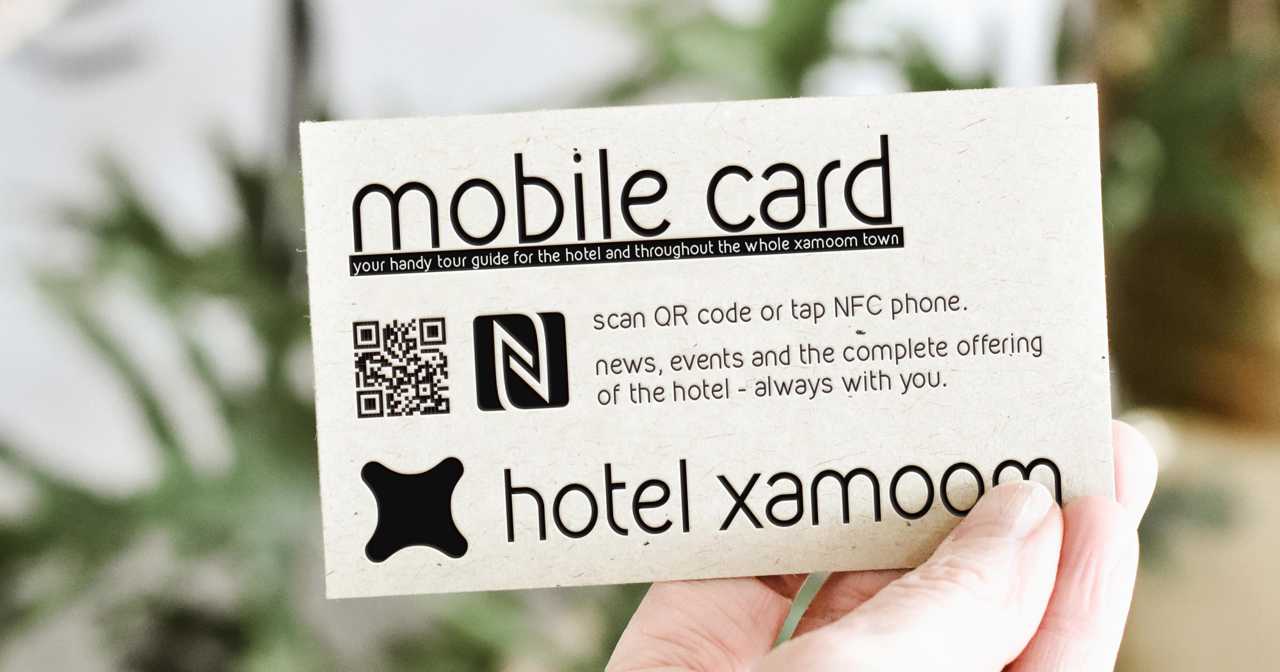A principle for added value is that someone can only spend money if he knows what he can spend it on. It is therefore in the interest of all stakeholders to make knowledge about all touristic offerings as widely accessible as possible.
If the country, the region, the city, and perhaps also the tourist businesses have each different apps and mobile offers, one will be left behind: the guest. He will not find anything because the content – if it exists at all – is very scattered.
The good news: A xamoom system of an entire region can be extended down to touristic operations without much extra work and high additional costs.
Applications and advantages for businesses
The entire breadth of the offerings of a good hotel is often difficult to communicate – especially when the guest folder is at the table in the room. The smartphone or a tablet, however, is always with the guest.
With a multi-lingual solution on the mobile web or via an app, the satisfaction of the guest can be raised, revenue increases and fast feedback can be obtained.

- More flexible than paper: new offerings or Wi-Fi codes are quickly added to the digital guest folder, no paper needs to be distributed. Likewise, you can remove a specific content in real-time again.
- The hotel directory gives an excellent and up-to-date overview of all services and can offer digitally any amount of depth.
- The morning post office offers tips or weather briefings, half of which could come from the destination management organization (DMO).
- In some destinations, the xamoom app also acts as the destination's digital guest card and offers a lot of coupons.
- Events and current news can be easily updated. Events can be stored tap in the mobile phone's calendar. So the likelihood that the person shows up at an event is significantly higher than just for expressing their interest on Facebook.
- Digital menus for breakfast, lunch, and dinner are produced in advance and adapt to the day and time automatically.
- There is enough room to introduce the team and to present other useful pages (history, philosophy, souvenir shop, etc.).
- Real-time communication: When guests are passing by a location (e.g., the front desk), messages are sent to their mobile phones. It is up to the guest whether or not he allows these messages. They can be switched on and off centrally and conveniently.
- With links or building blocks, you can individualize the service quickly and thus provide a piece of home (from the perspective of the guest). How about links to the radio streams of popular stations for the respective home country (Germany, Great Britain, the Netherlands or Sweden)?
- Easy reservations of additional services (massages, sauna, etc.) increase sales.
- If many questions are answered via an app or the mobile web, the front-desk will be relieved.
- iBeacons could provide the safest escape route from any location, as well as emergency behavior.
These are only a few applications that are possible on the smartphone or tablet.

Nothing on the phone is a "self-runner". Even the most practical information system needs advertising. The guest gets a card at the reception, which contains not only the usual contact details but also digital contact options including the URL for the mobile guest information system. Also, there is always an invitation to install the app of the destination management organization.
This card not only advertises the app. It also allows for quickly calling the hotel or navigating back with a finger tap. How does that look? Just scan the QR code above or go to t.xamoom.com.
What's in for the destination?
An app brings enormous benefits for a touristic destination management organization:
- The entire offering of a destination can be displayed more clearly than with many responsive websites.
- The usage is significantly higher than in the browser as the app "lives" on the home screen. Who types the URL of a (responsive) website more than once?
- Apps offer extended functionality such as the connection to the car's stereo set
- Push and iBeacons create a channel that – when used correctly – has enormous potential. Even most digital tourism regions are only scratching on the surface.

One of the biggest challenges is the marketing of such mobile services – whether on the mobile web or via an app. For this purpose, there are many good reasons to involve those who are closest to the guest and also have an interest in communication.
In some regions – see the example of St. Johann in Tirol on the right – the hotels and other touristic companies work very closely with the destination when it comes to app marketing. In almost every hotel room, there is a paper stand advertising the app. Why? Everyone profits when guests are more informed and satisfied.
In addition to the new mobile ambassadors, the holiday region gains ...
- a new marketing channel. More installed apps mean a more significant channel for push messages to guests, which can be targeted by topic, time of day, or sub-region.
- an obvious benefit to the destination's businesses with reasonable rates rather than high per-bed fees.
- more content that is up-to-date because the creation is shared among the DMO and its members.
What makes guests happy and satisfied
- They do not miss out on offerings they could have liked.
- They get one central info channel instead of numerous apps or URLs that are not complete.
- Digital concierge services (via integration of chat services like Intercom) quickly answer questions everywhere.
- Guests enjoy more information and up-to-date-content.
Much works at xamoom "out of the box". If additional development is necessary – for example, for special adjustments to a Wi-Fi welcome page – the costs can be shared between the region's tourism office and the companies.
Besides, no third-party app must be advertised at your own cost, but an app over which the destination retains complete control. Content, as well as functionality, are determined to 100 percent by the DMO and its members. And there are regular updates from xamoom with new features.
How that works and what it costs
A destination's xamoom system (starting at 199 Euro/month) can be used together with several towns or cities and many individual companies (hotels, mountain railways, miniature golf courses, ski schools, supermarkets, sport or gift shops, etc.) without much extra work. The possible applications are diverse, and the effort to create the content can be shared.
How does it work? From the beginning, the xamoom CMS featured different user roles: admins, regular users, and restricted users. Restricted users can only edit the content that they have been explicitly authorized to do. They only see those media files that you have uploaded and that are used in their pages. Such users can not "break" anything or browse through the content of other companies. They can create new pages and offer content for your guests.
This makes sense, especially since the companies are close to the guests and know their informational needs better than anyone else.
In such shared systems, everyone has access to the benefits of xamoom:
- a simple to use system to offer content on the mobile phone
- the combination of mobile web and/or app with accessibility for visually impaired people that excludes nobody
- multimedia content that is automatically served to the guest in their language
- Dynamic content that changes automatically depending on the time of day/date/situation/need of the guest
If support happens through the destination management organization, there is only a light annual fee per every restricted user. For more information ...
+43-463-930330
mail@xamoom.com
